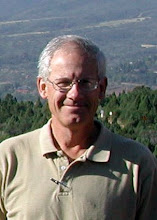Why Do Problems Exist -- Conclusions
Part 3 of a 3 part series exploring philosophical and religious thought about why problems exist.
In the first article of this series, I explored what the great Western thinkers have written about "the causes of things in general." In the second article, I explored what these thinkers have said about "things that go wrong, in particular."
In reviewing those last two articles, I became frustrated with myself for what I had written. It seems I was in a questioning mood, and wondered aloud about much of what I had read from these great scholars.
Therefore, in this final article I will
not be wondering anymore. I will combine the results of the first two articles to draw my own conclusions about the problems of life. You, the reader, might come to different conclusions.
The causes of everything we sense, including all of life's phenomena, can be broken into the following categories:
 Purpose: There is a purpose to everything we can see. This is most obvious in our human creations, where we can consider a desk, for example, and know that its creator had a purpose in mind. But I have concluded that all of nature also has a purpose. There's a purpose for ourselves, trees, the air we breath, the bacteria and other microbes that float around and all that we have not even discovered. There's also a purpose for the pain we feel when things go wrong in our lives. All of life has purpose. There is no exception.
Purpose: There is a purpose to everything we can see. This is most obvious in our human creations, where we can consider a desk, for example, and know that its creator had a purpose in mind. But I have concluded that all of nature also has a purpose. There's a purpose for ourselves, trees, the air we breath, the bacteria and other microbes that float around and all that we have not even discovered. There's also a purpose for the pain we feel when things go wrong in our lives. All of life has purpose. There is no exception.
Substance: There is a substance involved in all we can see. Without substance, nothing would exist. A desk, for example, might be made of wood -- perhaps an oak tree. When we consider why something exists, we have to acknowledge that its substance is part of its causes. But again, the same is true of all of nature. We, as humans, are made-up of substances, as are the trees, the air, and even bacteria and other microbes. Even the pain we feel when things go wrong in our lives has a substantive element. Chemicals are produced within our bodies that are deciphered by our brains as pain.
 Pattern: There is a plan, or template used in all that we can see. This plan is not the same as "purpose." The purpose of a desk might be to provide a work surface for writing. The plan for creating the desk would be the templates used in cutting the wood to make the desk. Without this pattern (plan), the desk would not exist. The same is true for ourselves, as well as the trees we can see, as well as the air, bacteria and other microbes -- none of these things would exist if it were not for the "pattern" used to create these things. This means that there is also a "plan" that exists for how emotional pain comes into our lives. There is always a plan. There are no exceptions.
Pattern: There is a plan, or template used in all that we can see. This plan is not the same as "purpose." The purpose of a desk might be to provide a work surface for writing. The plan for creating the desk would be the templates used in cutting the wood to make the desk. Without this pattern (plan), the desk would not exist. The same is true for ourselves, as well as the trees we can see, as well as the air, bacteria and other microbes -- none of these things would exist if it were not for the "pattern" used to create these things. This means that there is also a "plan" that exists for how emotional pain comes into our lives. There is always a plan. There are no exceptions.
Energy: There is a source of energy that exists behind all we can see. Energy was needed to create the desk from an oak tree, according to a plan, and suited for a purpose. The same is true for ourselves, as well as trees, bacteria, and all that exists. Nothing would exist the exertion of energy. Even the pain in our lives does not come free. The pain comes from the exertion of energy on a substance according to plan with a specific purpose.
I don't know about you, but I am awed at these conclusions. Everything in existence has meaning! All of life's phenomena have purpose.
Nothing happens, anywhere, to anything or anyone without a predefined purpose and plan!


2 comments:
The start of the subject ''Why do problem exist'' has been written vividly but has not drawn towards conclusive points.
Alok Ghosal, CVS-Life (USA)
Alok, I am sorry that I was not more clear about my personal conclusions. Let me try to restate. When things go wrong in our lives, they go wrong for a very specific reason. I, as an INDIVIDUAL, need to learn something about MYSELF. Whatever it was that happened to me had a very specific intent -- an intent generated by the Creator. Nothing in this life happens without a purpose. As I said in the blog, this is my personal conclusion -- very personal. And yet, to be honest, I don't know how any thoughtful person cannot come to this same conclusion. Thanks for your comment, and I look forward to a response.
Post a Comment